How does a seven-year-old boy see the world of grown-ups? How does he perceive and try to make sense of both the rules and the peculiar universe adults live by, and within that, himself? This is (partly) what Matches, Géza M. Tóth’s animated short film that has made it into the longlist of Oscar contenders is about. The multiple award-winning director has already come close to the golden statuette once before—now we are waiting to see whether in 2021 we can once again root for a Hungarian nominee at the awards ceremony held in late April. We asked Géza M. Tóth about his film.
Géza M. Tóth has already competed for an Oscar in the category of animated short once, in 2007: at that time, the golden statuette was awarded to Torill Kove‘s animation The Danish Poet instead of M. Tóth’s short film Maestro. The current longlist of 96 animated shorts features short films that have already been awarded at a prestigious animation festival and thus have been Oscar-qualified (the very same list also features another Hungarian animation director Nadja Andrasev and her film Symbiosis – the Ed.). In Géza M. Tóth’s case, this key event took place at Foyle Film Festival, where Matches won the Light in Motion prize awarded to the best international animation picture. The story told by jiggly matchsticks was also awarded at a lot of other international animation festivals from Moscow to New York.
Whether Matches has made it to the shortlist of ten will be revealed on February 9, and if it is then selected as one of the five Oscar nominees (to be announced on March 15), we’ll once again have somebody to root for in late April while sitting in front of the screens early in the morning. Even though it may seem like Géza M. Tóth is experienced in getting nominated for an Oscar, in fact he is more than grateful that life has been so kind to him with the various festival successes. He got his first taste of festival atmosphere in 1992 in Annecy (here his diploma project The Pied Piper was screened), then his film Icar was nominated for a Golden Bear in 1997, while in 2007 he made it into the hall of the Oscars with Maestro.
Matches invites the viewer into the fantasy world of a seven-year-old boy playing with simple matchsticks. On the frames of the 11-minute stop-motion animation, this ordinary object becomes the protagonist of the events. Moving along the child’s imagination, the colorful matchsticks sometimes appear on the screen as human-like figures while at other times they transform into objects (traffic lights, periscope, soccer ball, lightsaber, pepper mill and so on) or other creatures (birds, fish, frogs, amongst others).
The episode-like, consecutive scenes are narrated by the boy himself, who tries to understand the world of grown-ups and in it, everything that is a unique driving force in this universe, sometimes curiously and at other times uncomprehendingly and full of doubts. The rules defined by adults appear as recurring elements in the film, and with them the phenomenon of the uniform, one-size-fits-all society. All this is presented to the spectator through an entertaining and creative visuality: the fouling soccer player gets a red card, while the thief sneaking in under the cover of darkness makes a run for it when the alarm goes off.



Watching Matches is enjoyable principally because it tells a story, or rather stories, about universal truths and feelings in the simplest possible manner, by moving a tiny, ordinary object, often perceived as insignificant even, by remaining fresh, creative and entertaining in terms of both visuality and sound.
Géza M. Tóth mostly focused on finding a minimum sign that can activate the viewer, with which he can make them interested in what they see. With his film Matches, he wanted to model the childish way of thinking, to evoke the experience of “cloud gazing,” which we are all familiar with and which also appears in Sándor Weöres‘s poem Noonday Clouds (“On the hill where the foxes dig, / their dens and the rabbits run, / our Kathie gazes up to the clouds / in the glaring summer sun”.).

When we asked Géza why he opted for matchboxes out of all the ordinary objects, he said this seemed like the most obvious choice to him. Any other usual object could have been the protagonist of the film, but matches are interesting from several aspects: on the one hand, they are always on hand (even if we don’t use them so much today), or they somehow get into our hands while sitting and talking to our friends. A matchbox is a very simple yet compact object, and it also has an interesting sound. On the other hand, having a matchbox is a very grown-up thing to do, Géza says: to own an object that children generally aren’t allowed to have, something that is straight out prohibited (just think of the classic “Don’t play with matches!” warning). Besides all this, matches are one of the most obvious tools for demonstration, not to mention the matchstick puzzles generally used for mathematical problems. But what problems and solutions does Matches offer?
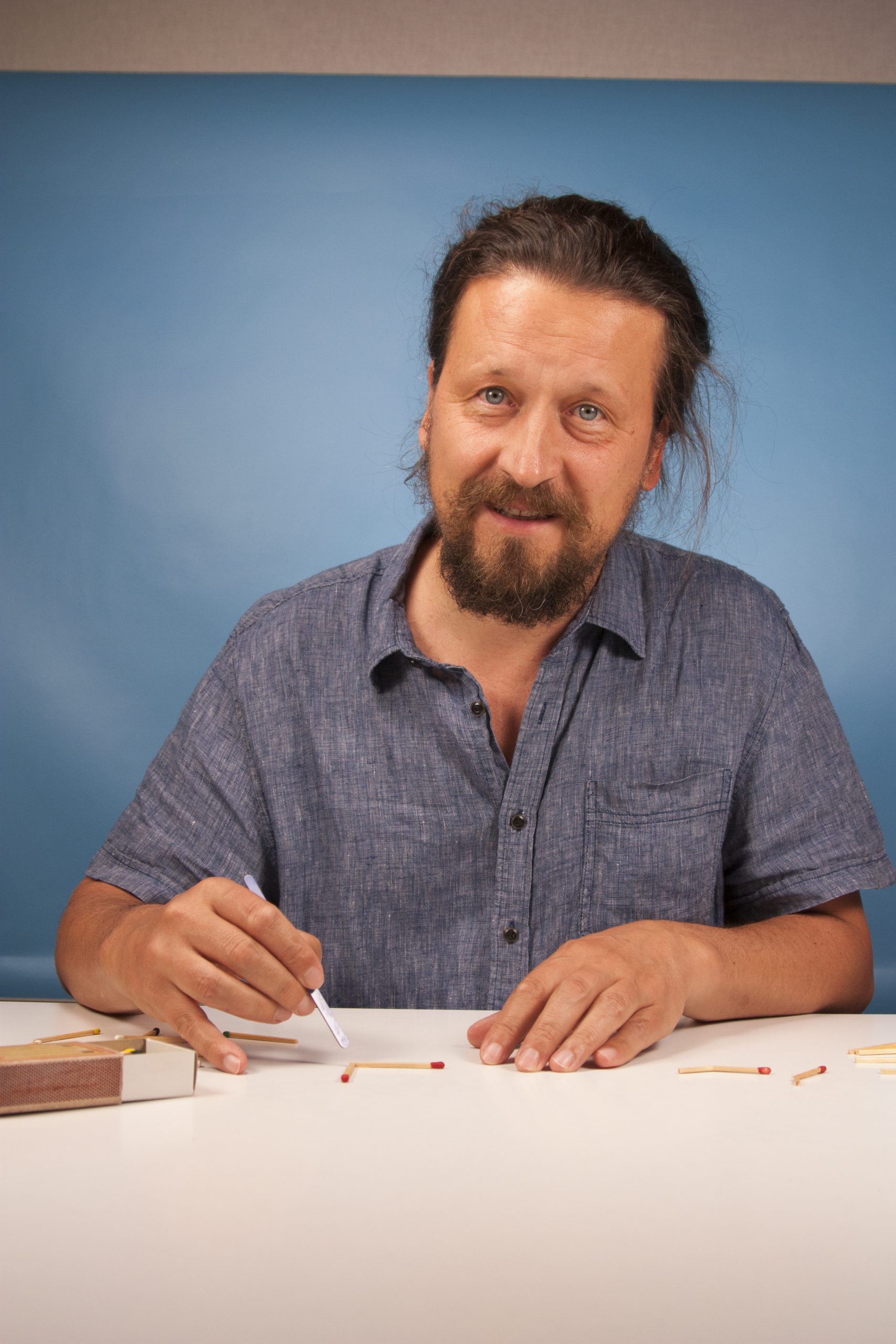
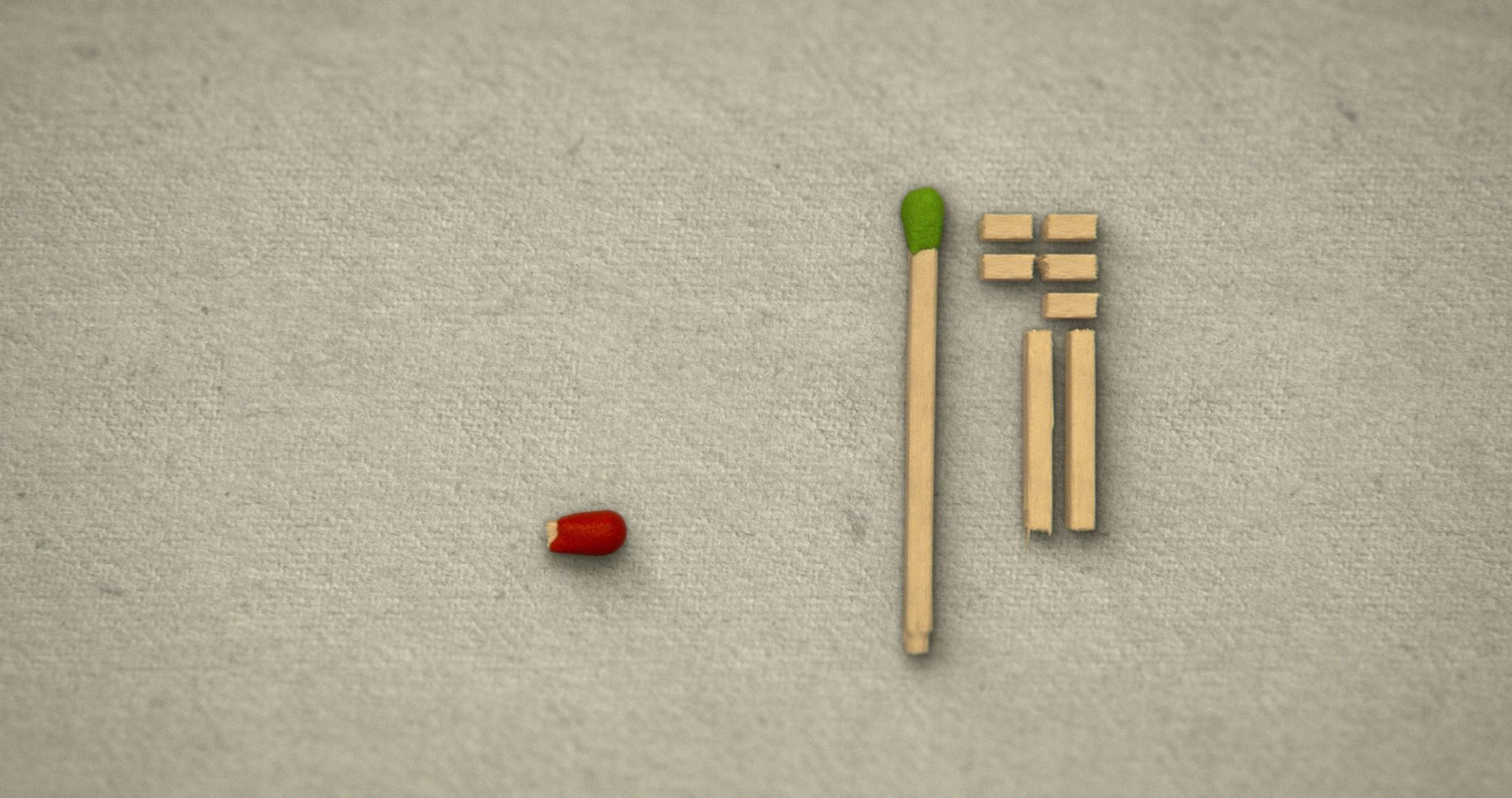
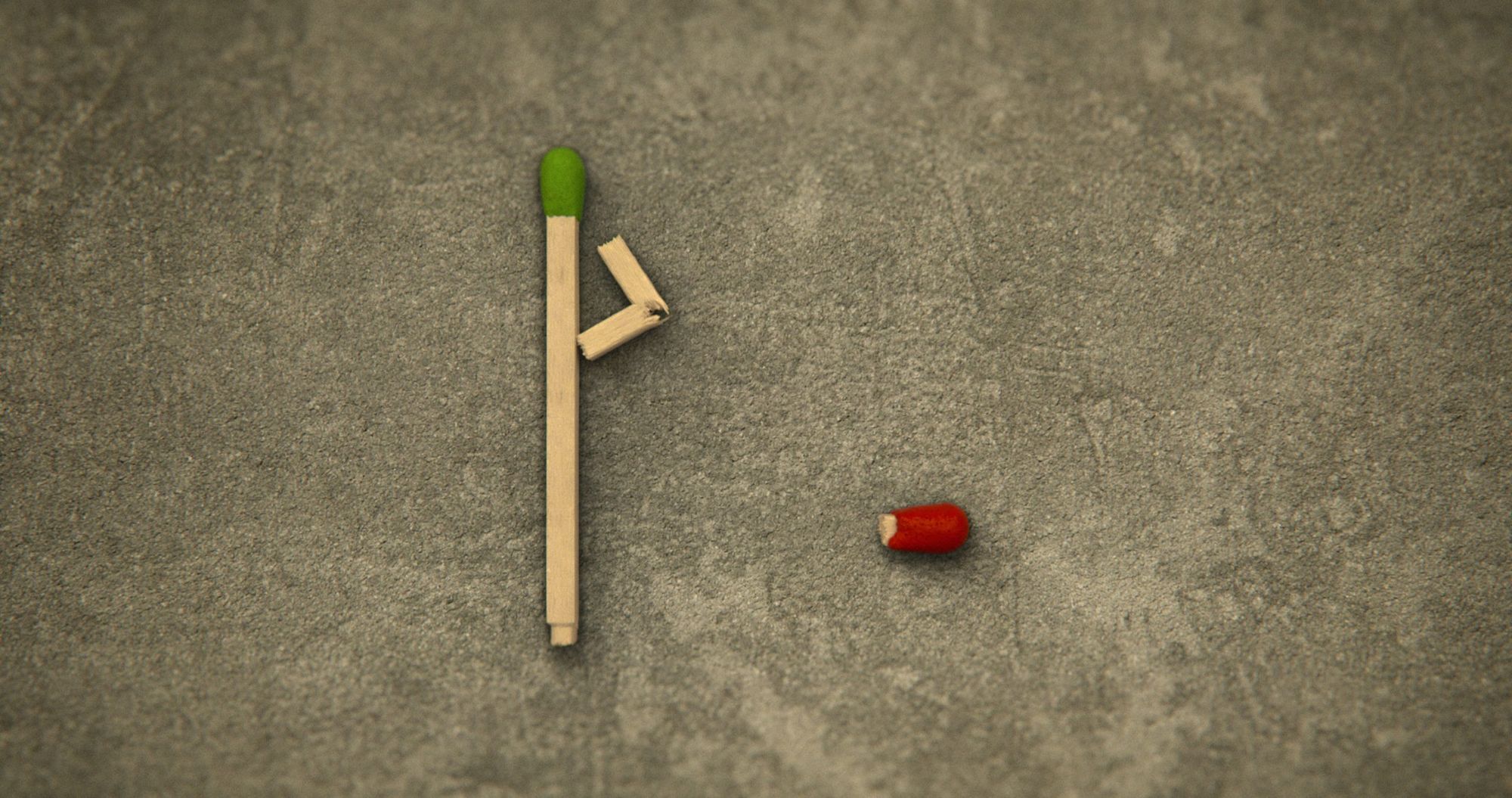

Looking at the images, the viewer many times finds it problematic to figure out what is happening at the moment. Interpretation is facilitated by the narration itself, and the various sounds and noises (known as ‘foley’ in film terminology, an addition of recorded sound effects after the shooting of a film – the Ed.). Matches is, as a matter of fact, a prolonged matchstick puzzle, in the case of which we have to “pull the focus” on our fantasy in every second. The director says he chose the stop-motion technique for his film exactly because he wanted to engage the viewer in story-telling in the simplest manner possible, by minimally animating a tiny object—and that is also why the sound work had to be maxed out, to make sure the story-telling accomplishes the goal.
In the case of Matches, this minimal animation meant a many-year-long waiting game: the matchsticks are present in the film in an almost untouched shape all throughout the film, but even so the simple objects called to life with minimal change of place and by replacing certain parts can evoke situations, moves, gestures and feelings known by all of us with almost life-like detail. While watching Matches, one might discover references to various famous films like Star Wars, Jaws or Mission Impossible—these are important and defining motion picture impressions that children tend to perceive more as the manifestations of certain feelings than as iconic movies. At the same time, well-known characters of the classic fairytale world also make an appearance, including Snow White or the Frog Prince, amongst others.
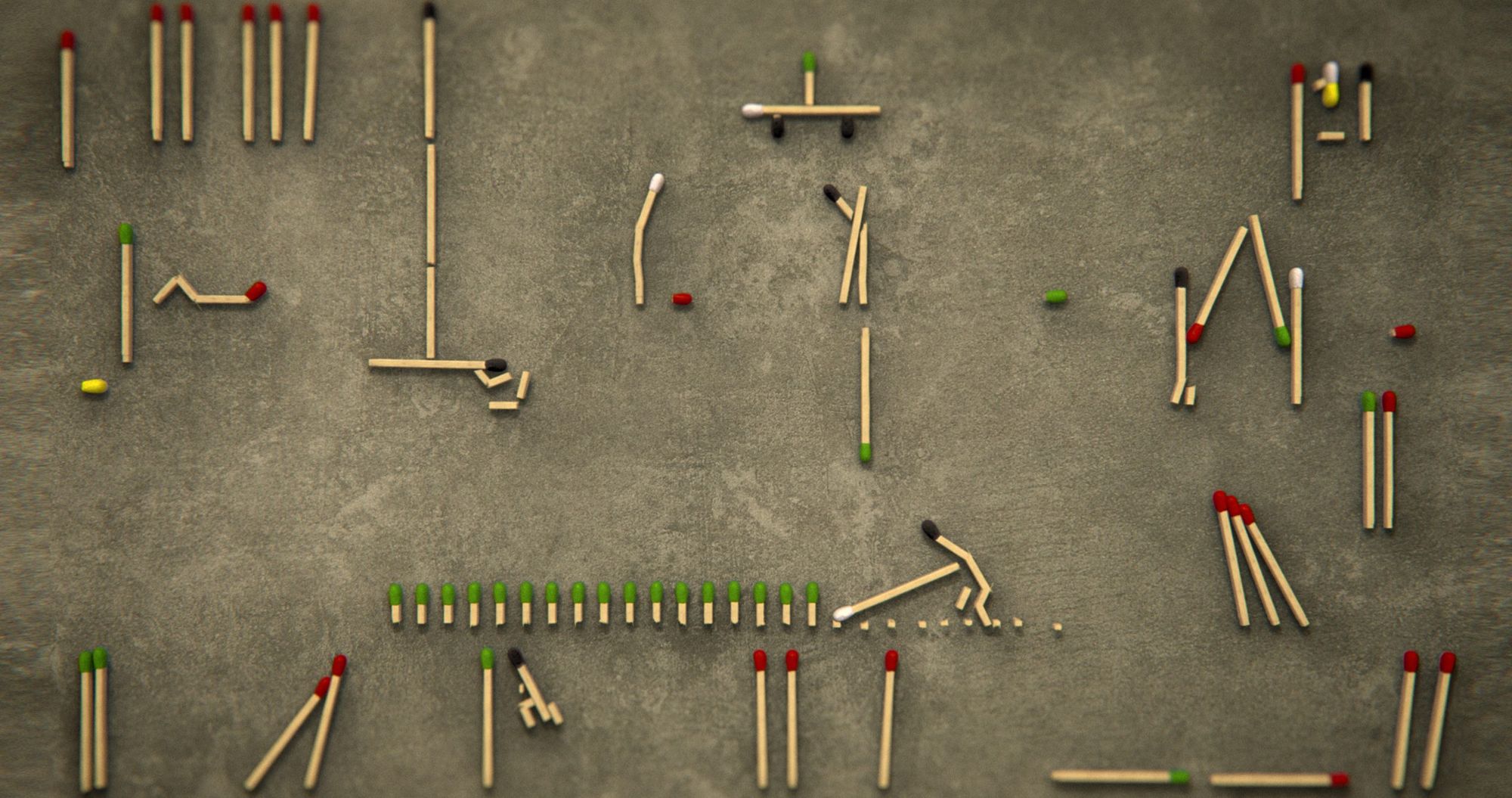


Géza M. Tóth, who had been the rector of the University of Theater and Film Arts in Budapest and at the same time the head of the Department of Production Design for five years, decided that he could not leave the idea of Matches in the drawer in March 2019, when his mandate as a rector expired. He started working on the film with this massive mental and creative energy released after leaving the university, and with the aspiration that his film should achieve as much as it can—his aim was not to create an Oscar-winning production, his aim was rather a matter of professional integrity. Luckily the film being aired and awarded at dozens of festivals confirmed that Matches had a great future, and no matter how this year’s Oscars will turn out, Géza M. Tóth already got a plan B worked out: the adventures of the playful matchsticks will continue in a 52-episode series, delighting the viewers with new matchstick puzzles in 2.5 minute long episodes. They plan to release the first 26 episodes this year, while the second batch is expected to air in 2022 depending on viewer feedback. The new series titled Mitch-Match is produced by KEDD Studio, an independent film studio Géza founded back in 2002. The aim of the studio with a handful of team members is to produce and distribute high quality content for children. The studio is already known for producing the popular Berry and Dolly or Kuflik animated series, amongst others.
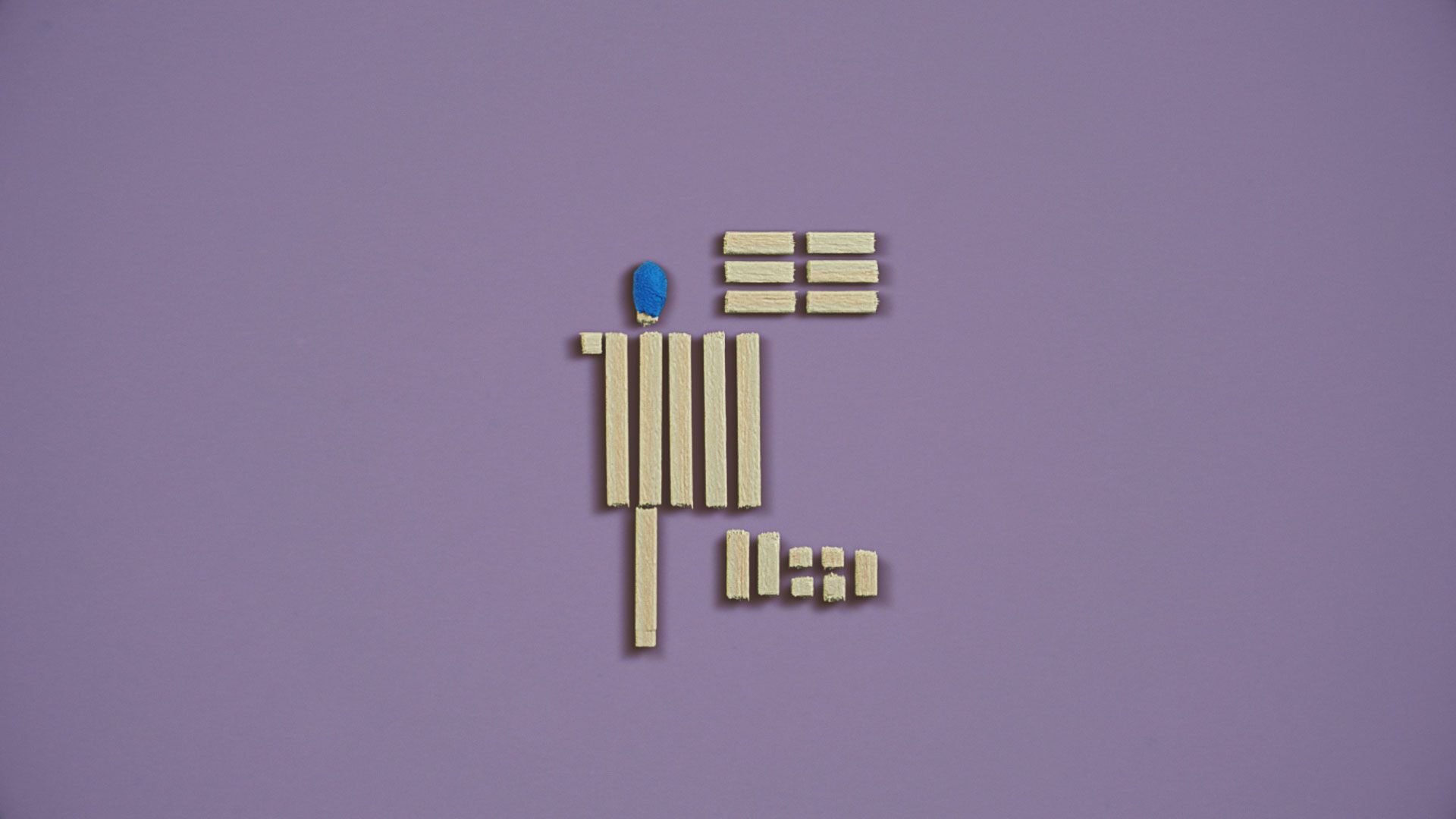
The creator is intrigued by the playfulness and creativity with which children can see a lot more into the simplest of things both in the case of Mitch-Match and Matches. The narrator of Matches—about whom we only know that he is a seven-year-old boy with the monogram S. L.—does not only stimulate our imagination but also faces us with thoughts that are only rarely verbalized in real life. These statements („Getting scared is really bad” or “In real life, there’s a lot of trouble”) keep their importance and seriousness even when accompanied by the funny images. As to the one-size-fits-all approach: the narrator himself says that even though grown-ups want everything and everyone to be the same, if this actually happened, it would be the worst thing on Earth.
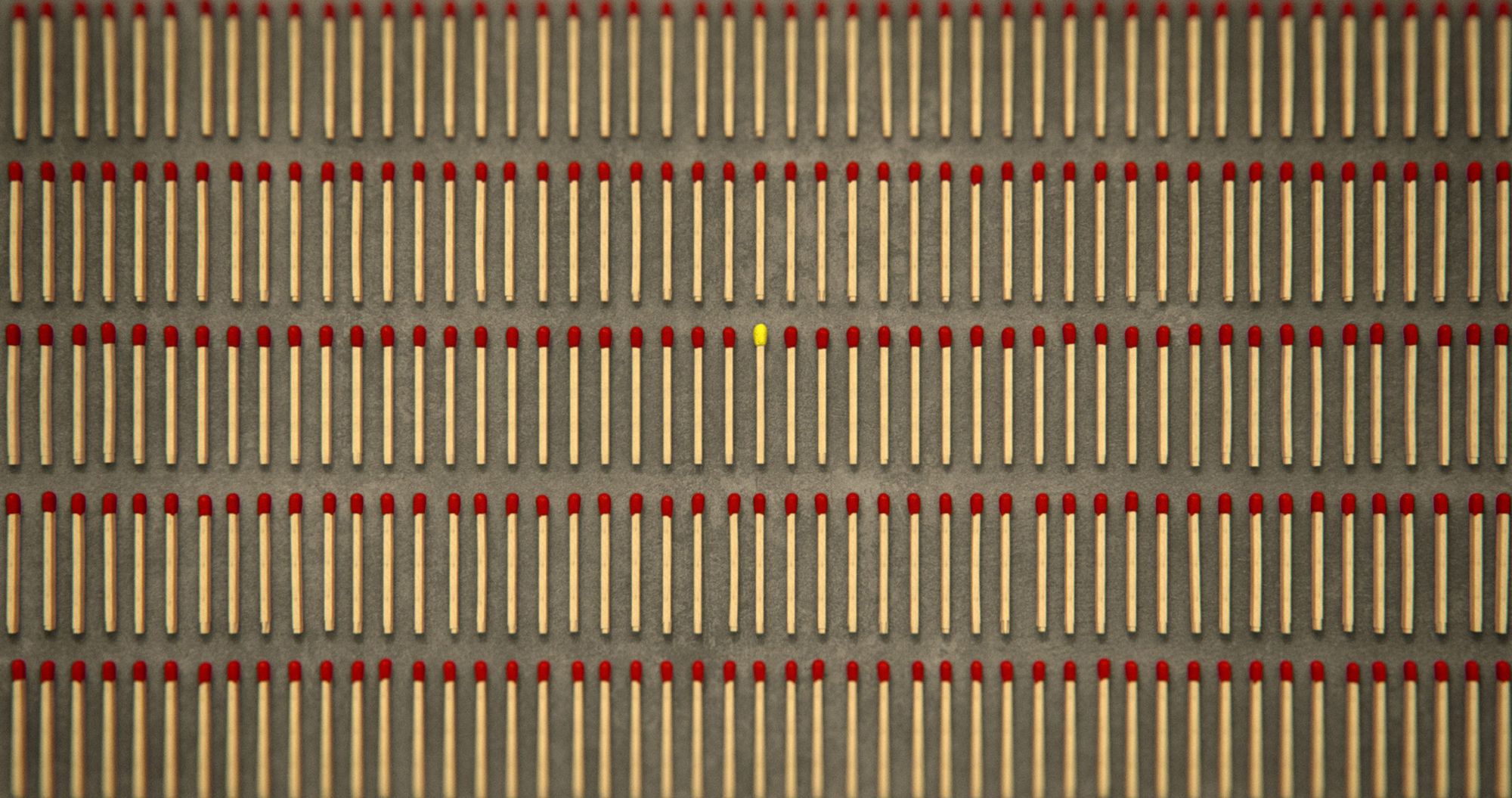
The trailer of the film shows the scene where our narrator talks about how everyone can be the best at something: they can make the best fried eggs in the world or can win a billiards competition. When we asked Géza M. Tóth what he thinks he is the best at, after giving it some thought, he answered: “Realizing the joy in walking untrodden paths is what I am and have always been fascinated by.”
Matches | Web | Facebook
KEDD Studio | Web | Facebook | Instagram

Life in the clouds | A modernist house in California
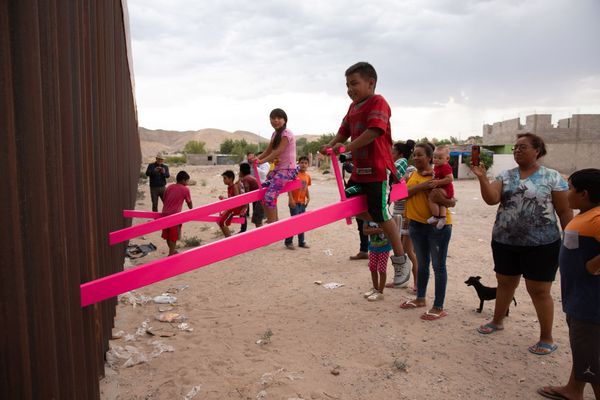
The 2020 Beazley Designs of the Year are Announced










